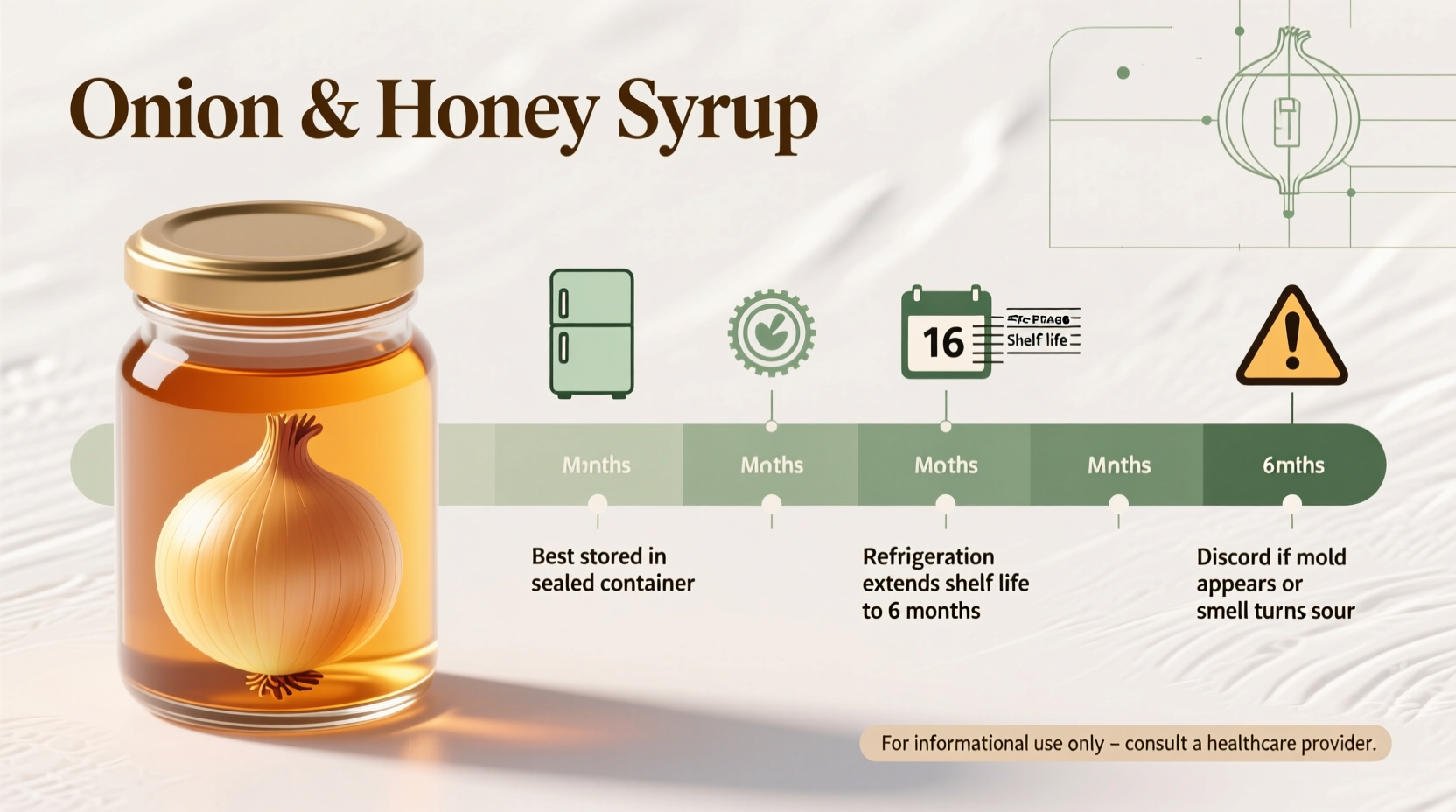Many households keep this traditional remedy on hand for coughs and sore throats, but understanding its proper shelf life is crucial for both effectiveness and safety. Getting the storage right ensures you have a potent remedy when needed while avoiding potential health risks from spoiled ingredients.
Why Shelf Life Matters for Natural Remedies
Unlike commercial cough syrups with preservatives, onion and honey syrup relies on the natural antimicrobial properties of its ingredients. Honey's low moisture content and acidic pH create an environment where most bacteria can't thrive, while onions contain quercetin and other compounds with antimicrobial effects. However, when you combine these ingredients, the moisture from the onions changes the preservation dynamics significantly.
"The moment you introduce fresh onion juice into honey, you're altering the water activity that makes honey naturally shelf-stable," explains food safety expert Dr. Linda Chen. "This creates a product that requires proper refrigeration and has a limited shelf life."
| Storage Method | Expected Shelf Life | Key Preservation Factors |
|---|---|---|
| Refrigerated (35-40°F/2-4°C) | 2-3 weeks | Airtight container, minimal headspace, clean utensils |
| Room temperature | 3-5 days | Highly discouraged - rapid spoilage risk |
| Freezer (-0°F/-18°C) | 3-6 months | Portion in ice cube trays for easy use |
Factors That Determine Your Syrup's Longevity
The standard 2-3 week refrigerated shelf life isn't universal. Several factors can extend or shorten your onion honey syrup's usable period:
Ingredient Ratios and Preparation
The ratio of honey to onion significantly impacts shelf life. A higher honey concentration (at least 2:1 honey to onion juice ratio) creates a more preserved product. When preparing your syrup:
- Use clean, sterilized jars and utensils
- Ensure onions are thoroughly washed and peeled
- Remove any visible onion pieces that could introduce bacteria
- Press onions to extract maximum juice before combining with honey
Storage Conditions That Make the Difference
Proper storage is non-negotiable for maintaining your syrup's safety and effectiveness:
- Temperature consistency: Keep at or below 40°F (4°C) - the USDA Food Safety and Inspection Service recommends this temperature to slow bacterial growth
- Air exposure: Minimize headspace in containers and always use clean utensils when accessing the syrup
- Light exposure: Store in dark glass or opaque containers to protect light-sensitive compounds
- Moisture control: Never introduce water into the container, as this dilutes honey's preservative properties

Recognizing When Your Syrup Has Spoiled
Knowing the signs of spoilage could prevent foodborne illness. Unlike honey alone, which rarely spoils, onion honey syrup has a limited shelf life and shows clear indicators when it's no longer safe:
Visual Indicators Timeline
Watch for these changes in sequence as spoilage progresses:
- Days 1-7: Clear separation may occur (shake gently before use)
- Days 8-14: Slight darkening is normal; significant color change indicates oxidation
- Days 15-21: Cloudiness or sediment formation suggests microbial activity
- After 21 days: Visible mold, bubbling, or foaming indicates definite spoilage
Critical Warning Signs
Discard immediately if you notice any of these:
- Fuzzy mold growth (white, green, or black)
- Alcoholic or fermented smell
- Bubbling or gas production
- Unusual sour or rancid odor
- Change in texture (slimy or excessively watery)
The National Center for Home Food Preservation warns that "even if mold is only visible in one part of the product, invisible roots may have spread throughout, making the entire batch unsafe to consume."
Maximizing Your Syrup's Shelf Life
Follow these professional techniques to extend your onion honey syrup's usability while maintaining safety:
Preparation Best Practices
- Use raw, unpasteurized honey which contains more natural enzymes
- Add 1-2 tablespoons of lemon juice per cup of mixture to lower pH
- Strain onion juice through cheesecloth to remove all solid particles
- Warm honey slightly (never above 110°F/43°C) to blend more easily with onion juice
Storage Techniques That Work
- Portion into smaller containers to minimize repeated opening of the main batch
- Leave minimal headspace in containers to reduce oxygen exposure
- Store at the back of the refrigerator where temperature is most consistent
- Consider freezing in ice cube trays for single-dose portions
Safety Considerations You Shouldn't Ignore
While onion honey syrup is generally safe for most adults, certain situations require extra caution:
- Infants under 12 months: Never give honey-based remedies due to botulism risk - the American Academy of Pediatrics strongly advises against honey consumption for this age group
- Diabetics: Monitor intake due to high sugar content
- Immunocompromised individuals: Be extra vigilant about spoilage signs and consider shorter shelf life (10-14 days)
- Prolonged storage: After 3 weeks, even refrigerated syrup may develop harmful bacteria despite no visible spoilage
"When in doubt, throw it out" is the golden rule for natural remedies. The slight cost of replacing spoiled syrup is insignificant compared to potential health consequences from consuming contaminated products.
When Homemade Isn't Best: Commercial Alternatives
If you need longer shelf stability, commercially prepared versions offer extended usability:
- Store-bought versions often contain additional preservatives
- Typically last 6-12 months unopened, 1-2 months after opening
- Look for products with clear expiration dates and ingredient transparency
- Consider shelf-stable alternatives like honey-lemon lozenges for travel
However, many users prefer homemade versions for their purity and customization options. Just remember that natural doesn't always mean longer-lasting - in fact, the opposite is often true.











 浙公网安备
33010002000092号
浙公网安备
33010002000092号 浙B2-20120091-4
浙B2-20120091-4